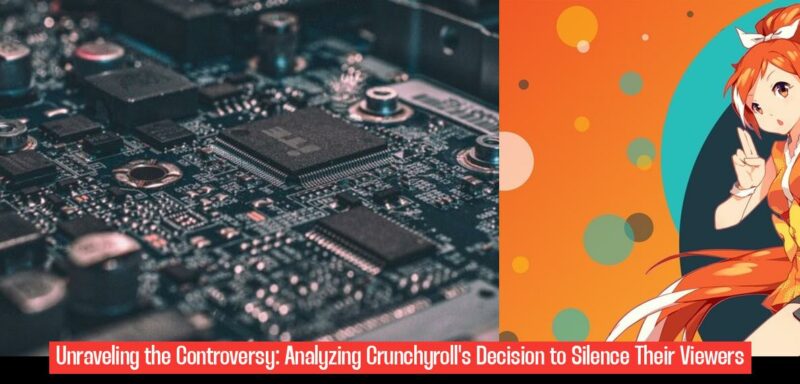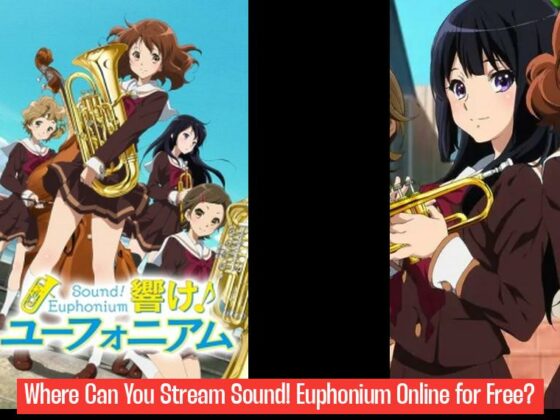Crunchyroll Silences Their Viewers: A Look at the Controversial Removal of the Comments Section
Crunchyroll, the popular anime streaming service, recently made a controversial decision that has left many fans bewildered and frustrated: they removed their comments section. This move, seemingly out of the blue, has sparked widespread discussion and debate within the anime community, with many questioning the reasons behind this drastic change. Was it a simple case of corporate laziness, a desperate attempt to curb toxicity, or something more sinister?
Let’s delve into the details of this situation and explore the various perspectives surrounding this decision, analyzing the potential motivations and implications of silencing Crunchyroll’s viewers.
Crunchyroll’s Comments Section: A History of Toxicity and Controversy
Before we dissect the reasons behind the removal, it’s essential to understand the context of the situation. Crunchyroll’s comments section, like many online forums, had a history of toxicity. While it was a platform for fans to discuss their favorite shows, it often became a breeding ground for negativity, hate speech, and even homophobic harassment. This toxicity ultimately became a liability for Crunchyroll, creating a hostile environment for many users.
In 2018, Crunchyroll addressed this issue by purging their forums, a move that initially met with mixed reactions. While some users welcomed the cleanup, others felt that it was an excessive and heavy-handed approach that stifled genuine discussion and community building.
Fast forward to 2023, and the company seems to have taken a more drastic step, completely removing the comments section from their platform. This move has been met with even more resistance and confusion, with many questioning the effectiveness and necessity of such a drastic solution.
The Homophobic Review Bombing of “Twilight Out of Focus”
One of the most prominent theories surrounding the removal of the comments section is that it was a direct response to the homophobic review bombing of the anime series “Twilight Out of Focus.” This series, featuring a gay romance, received a significant amount of negative feedback, with many users expressing their disapproval of the LGBTQ+ representation. This backlash, which included homophobic slurs and threats, created a toxic environment that ultimately led to Crunchyroll’s decision to remove the comments section.
While Crunchyroll has not explicitly confirmed this as the reason for the removal, the timing of the decision and the severity of the backlash against “Twilight Out of Focus” suggest a strong correlation. It’s understandable why Crunchyroll would want to protect their platform from such toxicity, but the decision to remove the entire comments section has been criticized by many as a knee-jerk reaction that punishes all users for the actions of a few.
Corporate Laziness or a Desire for Control?
Another perspective on this issue is that the removal of the comments section is simply a sign of corporate laziness. Some argue that Crunchyroll, facing the challenges of moderating a large and active online community, decided to take the easy way out by simply removing the comments section entirely. This approach, while seemingly effortless, comes at the cost of silencing the voices of their viewers and potentially hindering meaningful discussion and engagement.
However, it’s important to acknowledge that moderating online spaces can be a complex and resource-intensive undertaking. Companies like Crunchyroll, facing the pressure of constantly monitoring and managing their platforms, might be tempted to take shortcuts, especially when it comes to dealing with potentially problematic content.
The Future of Online Community Engagement
The removal of Crunchyroll’s comments section raises a broader question about the future of online community engagement. As platforms become increasingly aware of the challenges of moderation and the potential for toxicity, there is a growing trend towards limiting user interaction and control.
While this approach might seem like a necessary step to protect users from harm, it also raises concerns about free speech, open dialogue, and the potential for censorship. The question remains: how can platforms facilitate meaningful online communities while mitigating the risks of toxicity and hate speech?
Crunchyroll’s Silence Leaves Fans Frustrated and Unsure
Crunchyroll’s silence on the matter has only fueled the speculation and frustration among their viewers. The lack of transparency and communication has left many feeling unheard and ignored, further exacerbating the sense of alienation and disillusionment.
The Search for Alternatives: Fan Forums and Independent Communities
In the absence of a dedicated comments section on Crunchyroll, fans have turned to alternative platforms to discuss their favorite shows and engage with fellow enthusiasts. Online forums like Reddit and dedicated anime communities on social media have become important hubs for discussion and community building.
While these alternatives offer a space for fans to connect, they lack the official endorsement and support that a dedicated platform like Crunchyroll could provide. This underscores the need for platforms to prioritize community engagement and provide safe and inclusive spaces for users to share their thoughts and connect with others.
The Importance of Transparency and Dialogue
Crunchyroll’s silence on the matter highlights the importance of transparency and open dialogue between platforms and their users. Effective communication can help build trust and understanding, addressing concerns and fostering a more positive and engaged online community.
Moving Forward: Lessons Learned and a Call for Change
The removal of Crunchyroll’s comments section serves as a cautionary tale about the challenges of online community management. It’s a reminder that platforms need to take a proactive approach to fostering healthy and inclusive communities, addressing toxicity and hate speech head-on, rather than resorting to silencing their viewers.
The future of online community engagement requires a delicate balance between facilitating meaningful dialogue, ensuring safety for all users, and respecting the freedom of expression. Crunchyroll’s decision, while understandable in light of the challenges they faced, serves as a stark reminder of the responsibility platforms have to create spaces that are both engaging and inclusive for all.
Why did Crunchyroll remove their comments section?
Crunchyroll removed their comments section due to the history of toxicity, hate speech, and harassment that plagued the platform, creating a hostile environment for users.
What was the response to Crunchyroll’s decision to remove the comments section?
The removal of the comments section sparked widespread discussion and debate within the anime community, with many questioning the reasons behind this drastic change.
Was the removal of the comments section related to a specific incident?
One theory suggests that the removal was a response to the homophobic review bombing of the anime series “Twilight Out of Focus,” which featured a gay romance and faced backlash with homophobic slurs and threats.
How did users initially react when Crunchyroll addressed the toxicity in their forums in 2018?
When Crunchyroll addressed the toxicity in their forums in 2018 by purging them, the move received mixed reactions, with some users welcoming the cleanup while others felt it stifled genuine discussion and community building.



